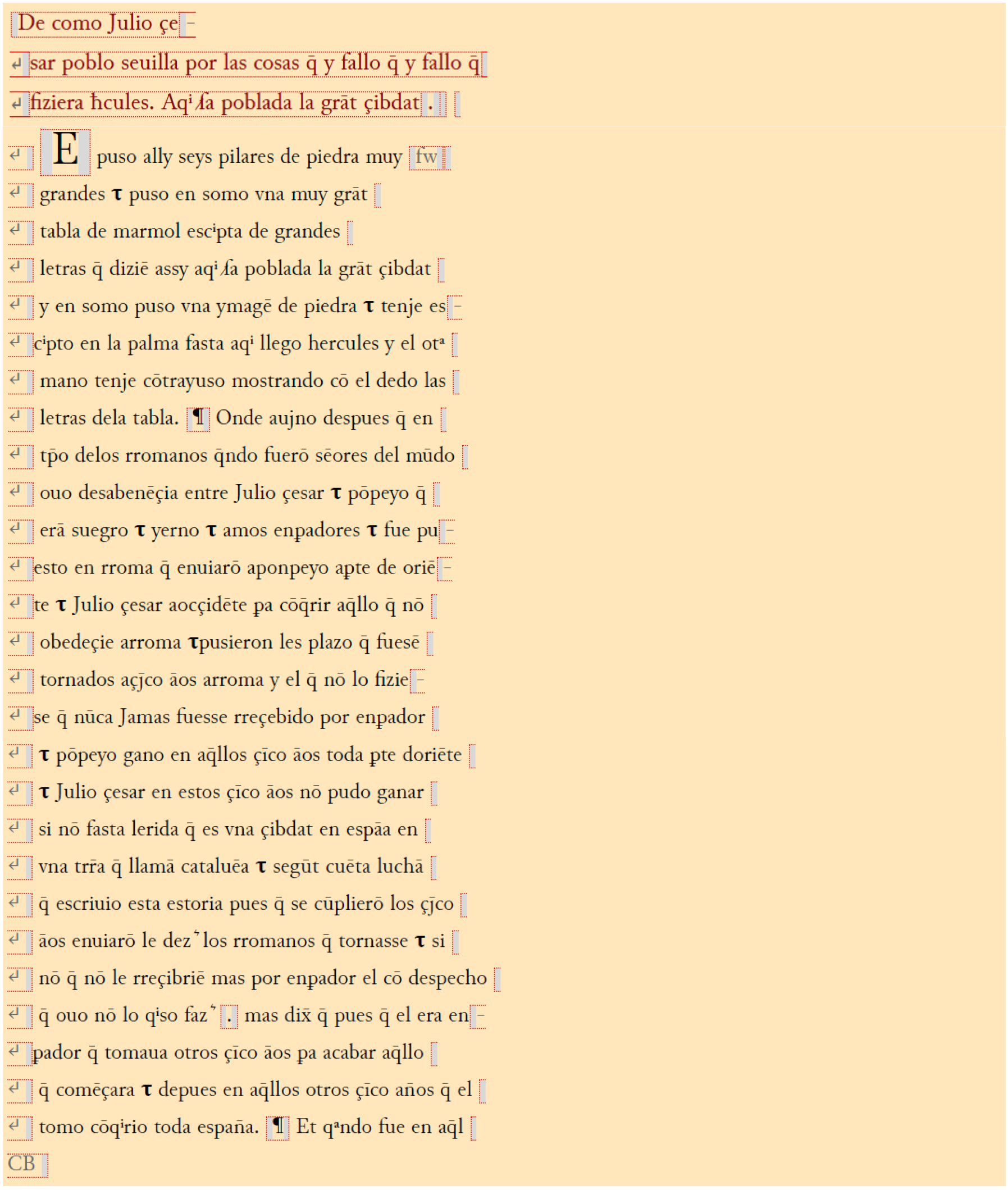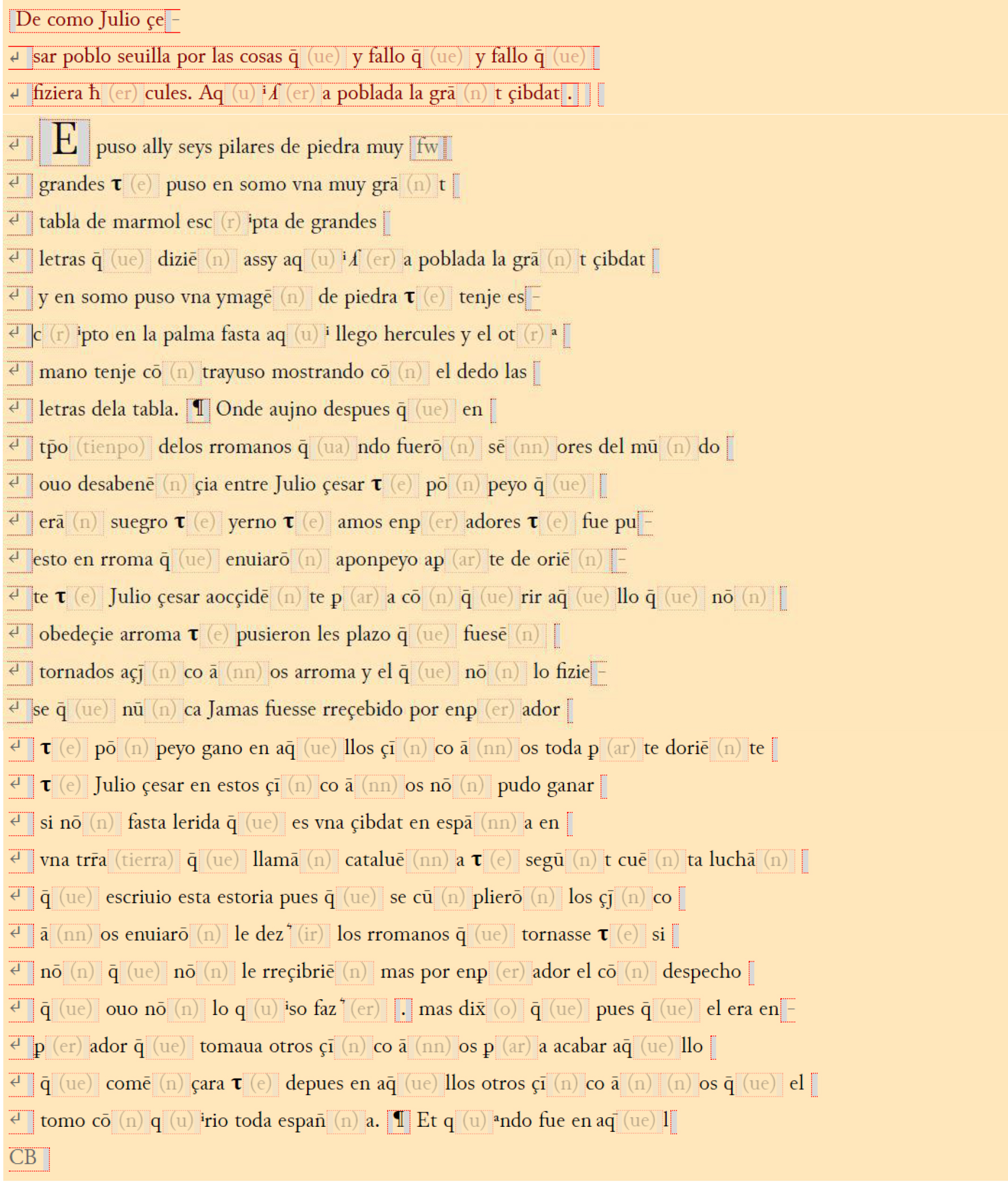Thank you all for your efforts with the first text – we hope you have enjoyed having a go at the transcriptions. We have already received more than 160 contributions, and there are a further 100 people signed up who we hope will begin transcribing soon. This is just fantastic. Without a shadow of a doubt, your input to this project has already been, and will continue to be very useful. We hope you have also enjoyed the varied blog posts with information about the text and the manuscript itself, and our approach to crowdsourcing.
In most cases people have been very successful at transcribing, looking carefully at the manuscript image and the base text transcription, and have conscientiously and meticulously chosen the features you needed to mark up. Transcribing a fourteenth-century text to this level of detail is not easy, so … congratulations!
We had hoped to be able to give individual feedback, but we have been blown away by the numbers who have signed up -currently standing at 260- so we are simply not able to respond individually to you all. We do, however, value the transcriptions of each and every one of you, and we recognise the significant time and effort you have invested. Of course, we can comment on anything you would like us to on individual transcriptions, so do please let us know if there is anything we can tell you about, on the blog, by email (transcribeestoria@gmail.com), through online messages (Twitter, Facebook) or publicly through our social media accounts.
In this post we’ll give you a few tips on some aspects to consider in the transcription of the next fragments. These are based on the most frequent transcription errors that we noticed when revising the transcriptions submitted. Of course, no individual has made all of these mistakes, but they do appear from time to time in the upcoming transcription passages, so if you take a look through them you will hopefully be able to avoid them in future.
First and foremost, here are the images of the how the correct transcription *should* have looked. You can compare with your own, if you wish, and have a look to see how you did. If there is anything in our transcription you don’t understand, do let us know. These are the correct transcriptions, in both abbreviated and expanded forms:
So: what were the most common errors in the transcriptions? In truth, there were very few, as you will see, and they are all easily avoided, once you know about them. It is perfectly normal for such slips to appear in your the first transcriptions, and they are usually caused by simple oversights (just like the medieval scribes…!) or by lack of familiarity with the transcription desk, especially where abbreviations or spelling variation are concerned. Even those of us who are most familiar with old texts make these kinds of mistakes at the beginning when we are not used to the type of writing or the usus scribendi of the manuscript. In any case, don’t worry; although it is normal to make such slips at the outset, it is also normal that these kinds of errors quickly disappear with practice. If you stick with us until Text 5 at the end of this trial project, you will see for yourself.
1. At the (ortho)graphic (spelling) level, the most common slip we came across is a missed <ç> (c-cedilla). One reason for this is that it did not appear in the special character palette, and it does not appear on all computer keyboards, so this was an omission on our part – sorry! This was pointed out to us by some volunteer transcribers, and we were able to rectify it – the c-cedilla now appears in the special character palette, at the end of the fourth line. Thank you so much to those who noted our error.
For those who do have the cedilla button, but still missed it out, this is for you 🙂 You’ll have noticed that unlike the base text from manuscript E1, our codex, C, uses the ç before a palatal vowel (<e> o <i>). For example: *cibdat > çibdat, *cesar > çesar. Something similar happens with two other graphs: <j> (which is more common in C, both as a consonant and vowel: *cinco > cjnco, *iamas > jamas) and <v> (used systematically at the beginning of words in C: *una > vna, *uio > vio). With a little attention, or by going back to revise your transcription, you’ll find this problem disappears quickly.
2. As far as abbreviations are concerned, many transcribers chose the macron representing a nasal <-m> before <p> or <b>. Of course, this is logical, as it respects the current Spanish usage. However, if we take the scribal practice (usus scribendi) into account (which we always do in the Estoria Digital), we always use the <-n> macron in these cases (that is, a nasal consonant at the end of a syllable and before a <p> or <b>). For example, *po(m)peyo > po(n)peyo, *no(m)bre > no(n)bre. This is because, having studied the fourteenth-century manuscript in its entirety, we have noted that when these words are not abbreviated, they most often appear with an <n> before a <p> or a <b>. Another slip is when we forget to mark the abbreviation of <-n> (macron) in the menu, whether the symbol is there nor not in the base text, thus: *no > no(n), *ymage > ymage(n); *grant > gra(n)t, *contrayuso > co(n)trayuso. And finally, when we come across the palatal nasal consonant <nn> (e.g. espanna), we don’t correct this to <ñ> (the current letter), but rather mark the second <n> as an abbreviation (macron): *españa > espan(n)a, *catalueña > *cataluen(n)a.
3. Other menu options: We are aware that there was a programming issue with the placing of the rubric (which has now been resolved), but in addition, don’t forget that we also have to mark any marginalia (Seujlla), any corrections by the copyist (*remos > queremos) and any punctuation marks that appear in the text (pilcrow, tripunctus).
If you are interested in knowing more details, please consult this document, which is an inventory of errors we came across in your transcriptions sorted by type and frequency. However, do please remember that we are truly grateful you are collaborating with us. Transcribe Estoria is a pilot project for now, and we are aware that there will be some techincal difficulties. For this reason we are very grateful for your comments and suggestions and we encourage you to keep on transcribing, as we launch Text 2 tomorrow, Wednesday 16th.
Aengus, Polly and Ricardo



1 thought on “Text 1: The most common transcription errors”
Comments are closed.